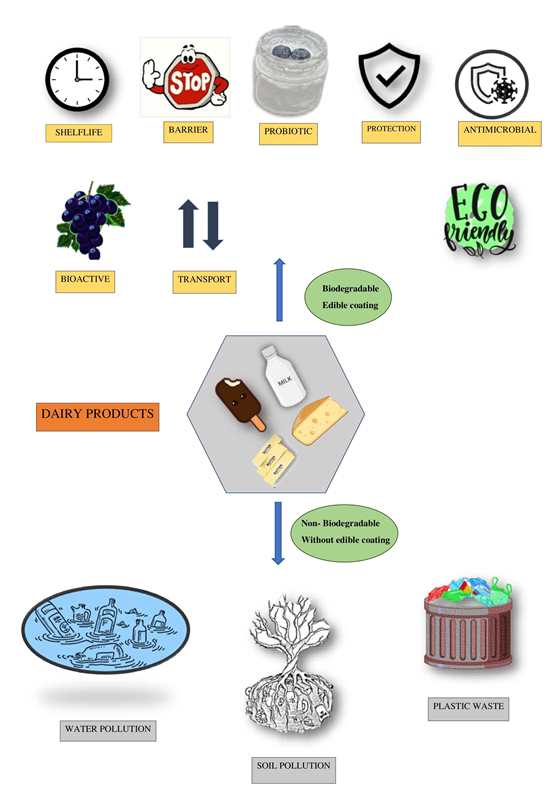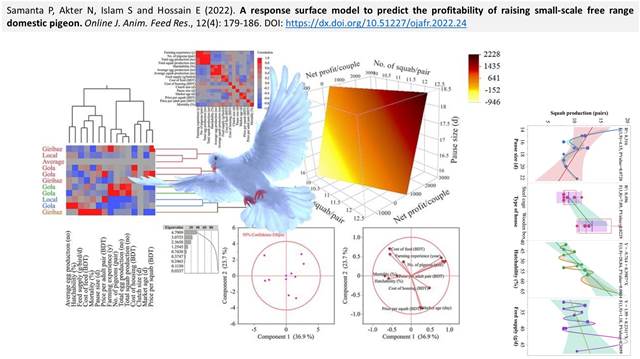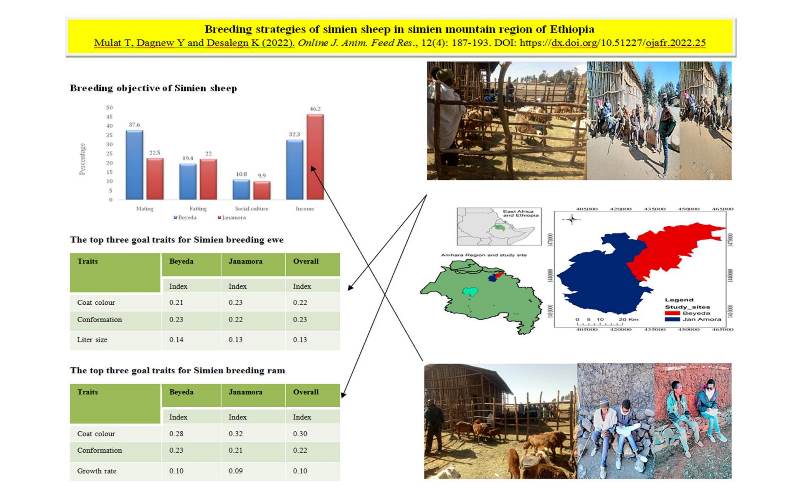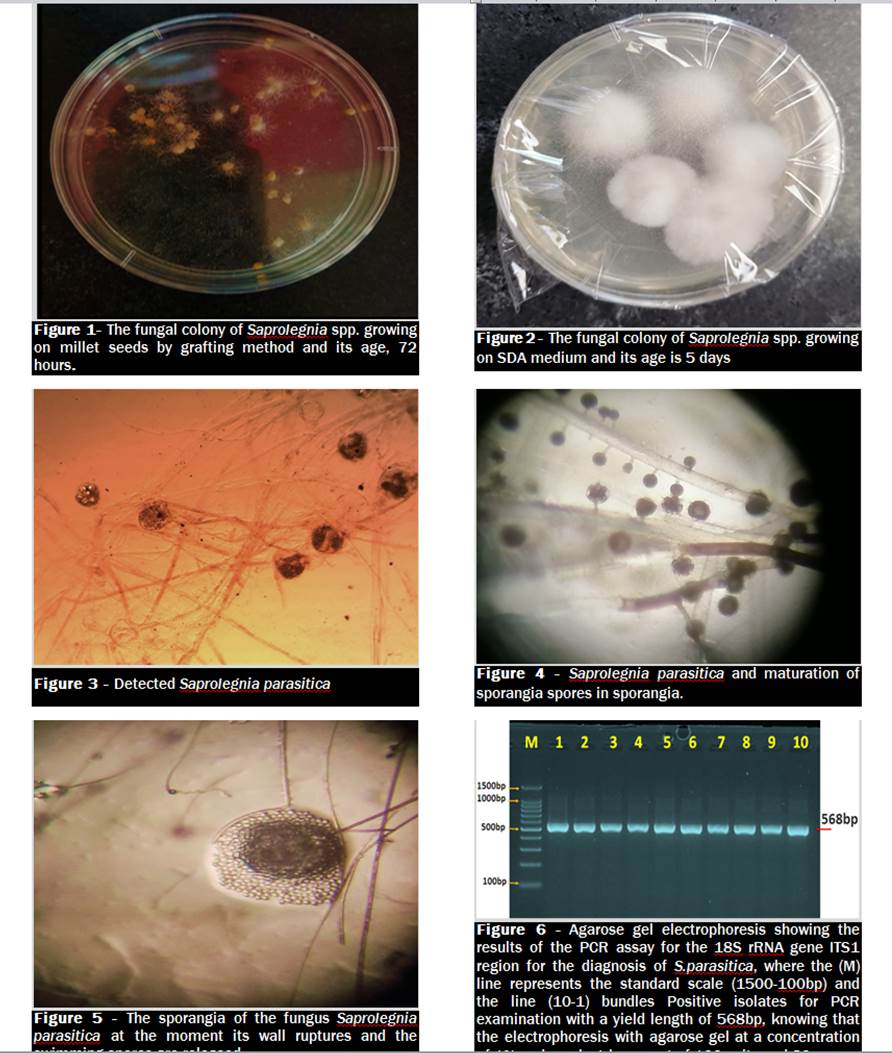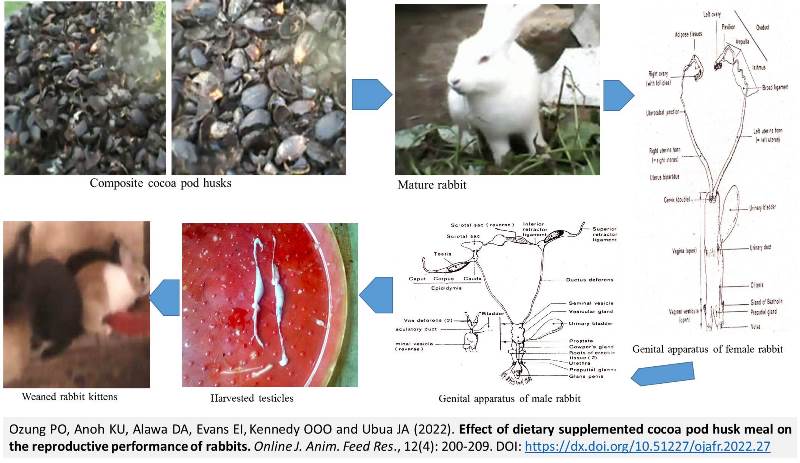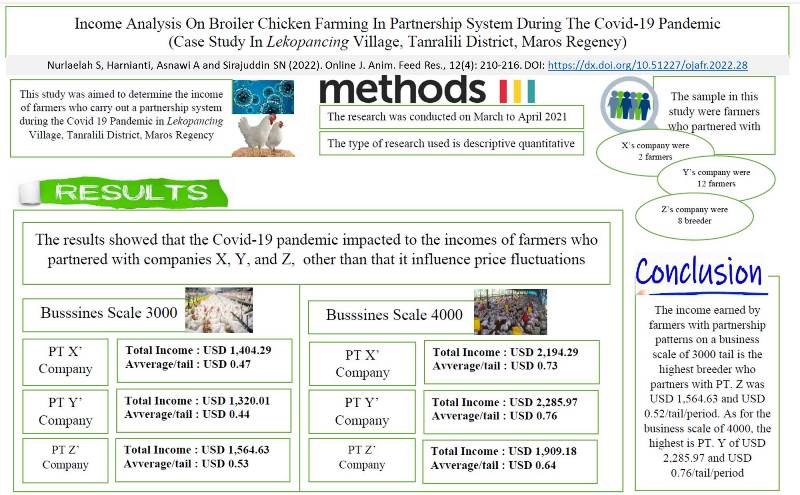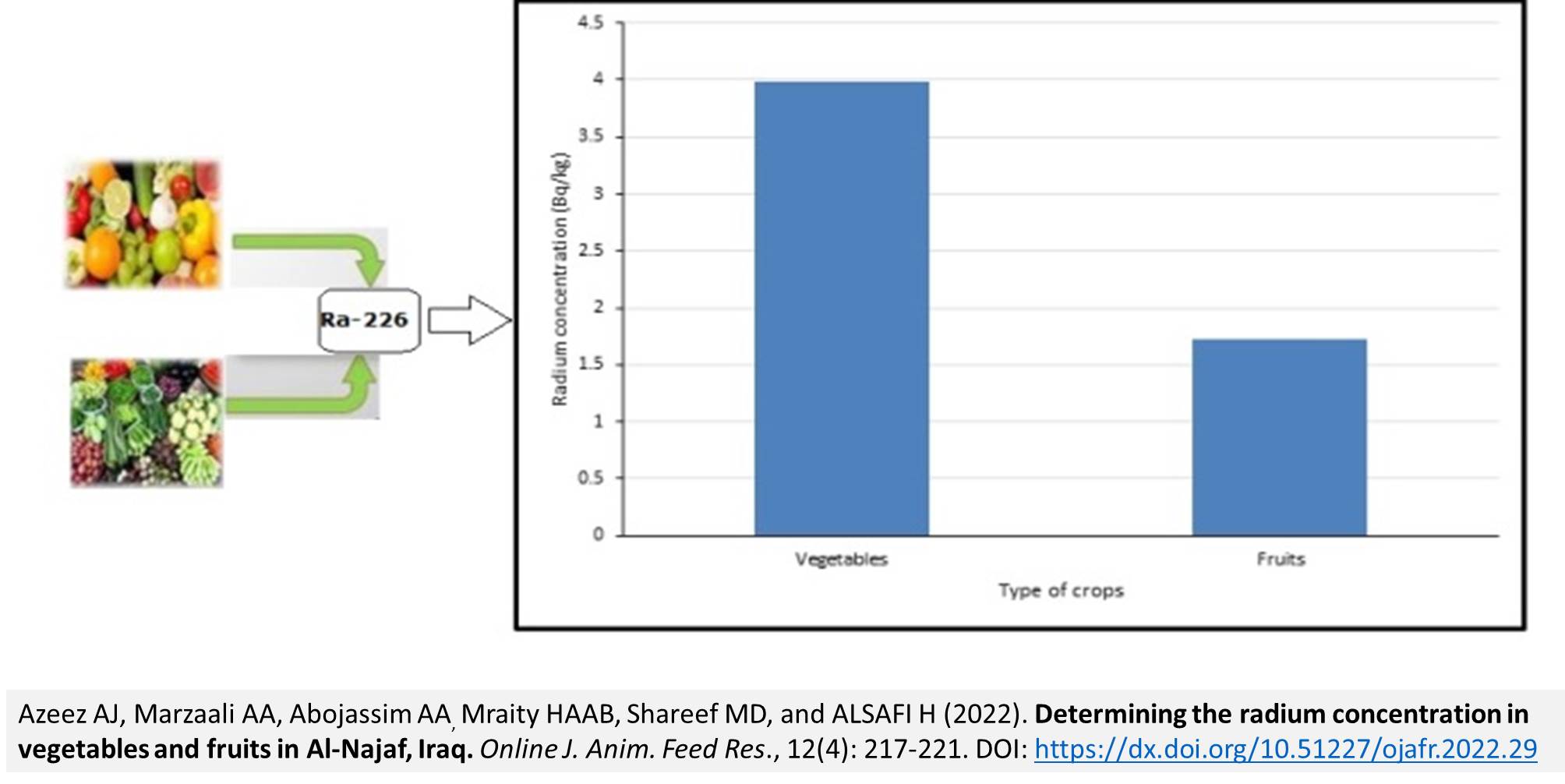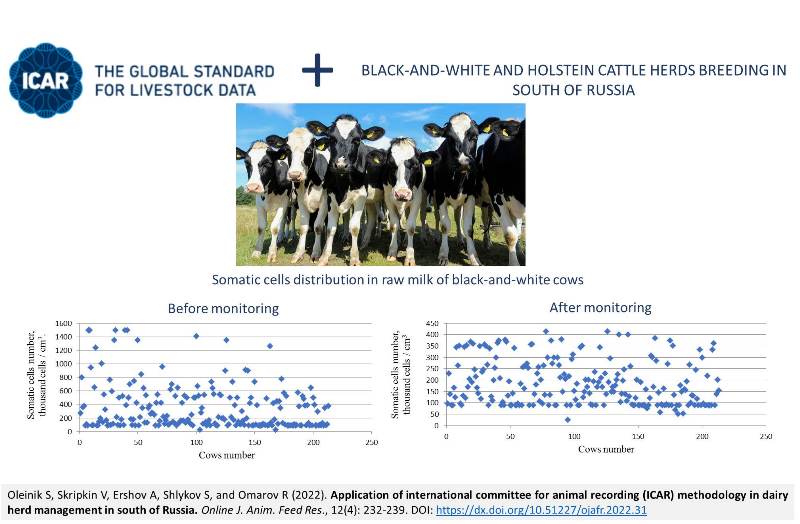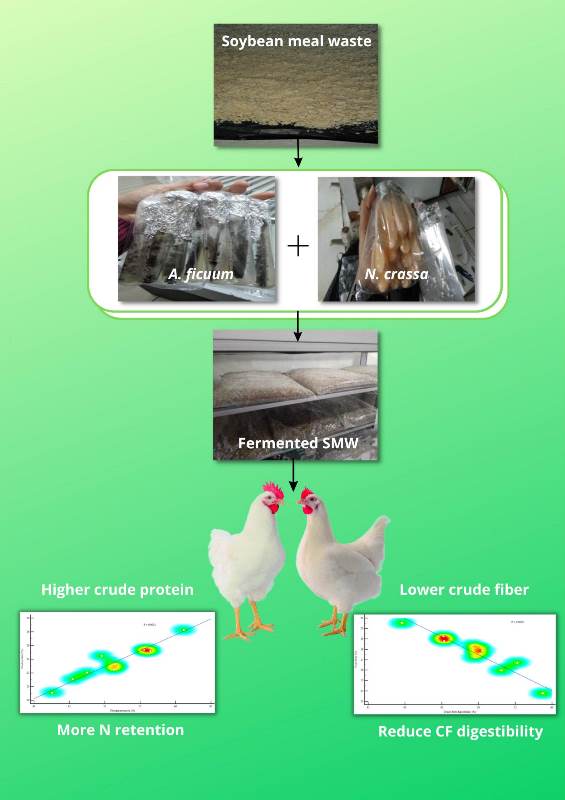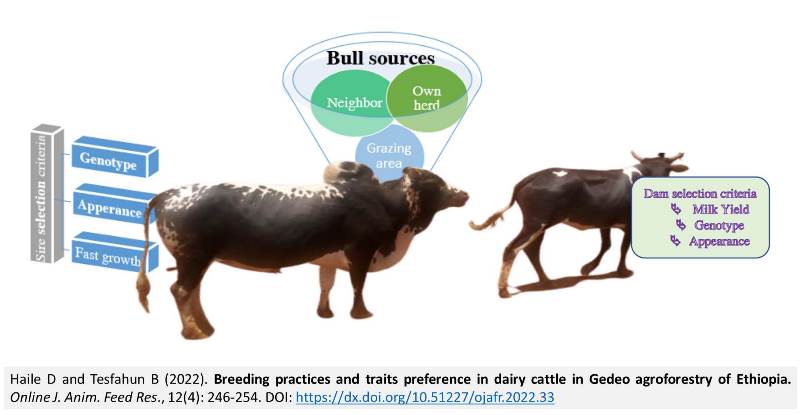Previous issue | Next issue | Archive
![]() Volume 12 (4); July 30, 2022 [Booklet] [EndNote XML for Agris]
Volume 12 (4); July 30, 2022 [Booklet] [EndNote XML for Agris]
Edible coatings and the need for biodegradable polymers with focus on dairy products
Richard NSh.
Online J. Anim. Feed Res., 12(4): 173-178, 2022; pii: S222877012200023-12
DOI: https://dx.doi.org/10.51227/ojafr.2022.23
Abstract
Natural polymers are non-toxic, affordable, and abundantly accessible; hence they're often used in edible coatings. Covering vegetables with edible coatings that include antimicrobials, browning inhibitors, and nutraceuticals is a unique way to increase their nutritional value. Natural polymers are non-toxic, affordable, and abundantly accessible; hence they're often used in edible coatings. Covering vegetables with edible coatings that include antimicrobials, browning inhibitors, and nutraceuticals is a unique way to increase their nutritional value. Most edible coatings employ non-toxic, inexpensive, readily accessible natural polymers. Using biodegradable synthetic polymers and liquid and solid lipids, nano systems may be built at room temperature. To minimise food waste, edible food packaging utilises high-quality, low-impact packaging materials. Dairy consumer goods are among the industries targeted by the attack. Polymer nanocomposites, a kind of nano reinforcement, may act as a small gas barrier by increasing the difficulty of passing through the material. To put it simply, we now have the ability to accurately estimate the shelf life of our products thanks to developments in packaging technology, as well as biodegradable packaging and several other advantages. Packaging nanotechnology applications are categorised by their principal function. In conclusion, biodegradable synthetic polymers and liquid and solid lipids may also be used to create nano systems at ambient temperature. It is argued that recent advances in the usage of nano systems such nanoparticles, nanotubes, composites, and emulsions, are reviewed critically in this study. For food preservation purposes, nano dispersions may be supported by polymers, although the main focus of this article was on providing information on nano systems and how they can be used in various food substrates.
Keywords: Biodegradable, Dairy products, Edible coating, Food industry, Nanotechnology.
[Full text-PDF] [Scopus] [ePub] [Export from ePrint]
|
|
A response surface model to predict the profitability of raising small-scale free range domestic pigeon
Samanta P, Akter N, Islam S, Islam Sh and Hossain E.
Online J. Anim. Feed Res., 12(4): 179-186, 2022; pii: S222877012200024-12
DOI: https://dx.doi.org/10.51227/ojafr.2022.24
Abstract
The study aimed to investigate the comparative profitability of raising different breeds of small- scale free range domestic pigeon in the Chattogram metropolitan area of Bangladesh. A cross-sectional survey was carried out for a period of three months from July to September 2021 using a structured questionnaire. Results indicated that there were no differences among the performance parameters of the non-descriptive, Gola and Giribaz breeds of pigeon. However, the non-descriptive breeds produced more eggs and thus squabs per year than the Gola and Giribaz. Similarly, the average pause size, feed supply per day and market age were lower in the local breeds compared with Gola and Giribaz. Hatchability percentage of the local breed was higher than the other breeds. Average mortality was moderately higher in the Giribaz. The average flock size was 4.9±0.70 pair. The average annual egg and squab productions were 20.6±1.10 and 10.7±1.00 pairs, respectively. The average daily feed supply was 37.8±1.5 g/bird. The average clutch and pause sizes were 2.0 and 17.3 day, respectively. Average market age, hatchability and mortality were 30.6±0.90 day, 51.4±2.20% and 7.6±1.6%, respectively. Mean feed and housing cost were 1008±24.7 and 443±42.8 Bangladeshi taka (BDT) per pair/year, respectively. Mean market price per pair adult and per squab was BDT 365±18.6 and 130±4.9, respectively. Flock size and pause size had strong positive and negative correlations with annual squab production. There were no significant differences between the net profit of the farms rearing different breeds of pigeon. However, farms raising local breeds had the highest annual net profit (BDT 823/pair) compared with other farms raising Giribaz (BDT 478/pair) and Gola breeds (BDT 319.70/pair). Principal component analysis identified annual egg production and feed cost as the principal eigenvector determining net profit. It was concluded that despite marginal profit, small-scale free range domestic pigeon farming was economically viable for the subsistence of the rural livelihoods.
Keywords: Free range, Giribaz, Gola, Pigeon, Profitability.
[Full text-PDF] [Scopus] [ePub] [Export from ePrint]
|
{/source {source} |
Breeding strategies of Simien sheep in Simien mountain region of Ethiopia
Mulat T, Dagnew Y and Desalegn K.
Online J. Anim. Feed Res., 12(4): 187-193, 2022; pii: S222877012200025-12
DOI: https://dx.doi.org/10.51227/ojafr.2022.25
Abstract
This study was conducted to characterize the existing sheep breeding strategies as an essential step in designing a breeding program for linking sheep production in the Simien mountain region of Ethiopia. Interview with sheep keepers, direct ranking method of traits, and field observations were carried out in selected districts of Simien mountain region. Sheep kept mainly as a source of income, saving and meat with an index value of 0.27, 0.21, and 0.20 in the Beyeda district whereas the corresponding value for Janamora was 0.26, 0.22, and 0.19, respectively. Mean sheep flock sizes were 14.9 and 16.2 in Beyeda and Janamora districts of Ethiopia. Natural and uncontrolled breeding was common in the Simien mountain region of Ethiopia. Coat color, body conformation, and fast growth rate were important traits in selecting breeding rams in both study districts. Coat color and appearance were selection criteria for breeding ewes in both study districts. It is observed that Simien sheep is highly valued for its tasty meat and produce under low input conditions. However, the survival of Simien sheep is endangered due to uncontrolled breeding, intervention failures in livelihood, and market-oriented agricultural systems. In conclusion, the main breeding objective for sheep production have been defined as increasing meat production and marketed animals and this is driven by market demands. Compared with other local sheep types, Simien was rated highly by both producers and consumers in their tasty meat. These characteristics make the Simien sheep economically more important. Yet Simien sheep need to be conserved as they could serve as a source of safe and tasty products for consumption.
Keywords: Breeding practice, Livestock population, Mountain region, Sheep flocks, Simien sheep.
[Full text-PDF] [Scopus] [ePub] [Export from ePrint]
|
|
The spreading and molecular characterization of the fungus Saprolegnia parasitica in the water of Al-Diwaniyah river of Iraq
Muataz MAA and Majid KA.
Online J. Anim. Feed Res., 12(4): 194-199, 2022; pii: S222877012200026-12
DOI: https://dx.doi.org/10.51227/ojafr.2022.26
Abstract
The water mold Saprolegnia parasitica is a chief species of oomycetes that affects a wide range of plant, natural ecosystems, fish and the aquaculture industry. The current study aimed to investigate the isolation and identification of some aquatic fungi like Saprolegnia spp. and also molecular characterization of Saprolegnia parasitica in the water of Al-Diwaniyah river of Iraq using the baiting method for isolation and PCR polymerase chain reaction for molecular diagnosis of fungi. A total of 60 samples were taken from three study sites of river: 25 samples of Al-Shafi’iah city bridge (Najaf road) as first site (S1); 25 samples of Hawly Al-Jamiah road bridge, Umm Al-Khail area, as second site (S2); and 10 samples of Al-Orouba bridge as the third site (S3). Molecular diagnosis was carried out by PCR examination using primers for the rDNA gene and its presence in Saprolegnia parasitica, as DNA was obtained at a concentration of 685.4-99.4 μg/μl and a purity of 1.92-1.8. The samples from the first site gave the highest number of 18 isolates (45%), followed by samples from the second site with 14 isolates (35%). The samples from the third site showed a number of 10 isolates (20%). The species S. parasitica was more visible during February 2020 with a number of 17 isolates, and less visible in April 2021, with a number of 3 isolates. In conclusion, the variation in the presence of the types of infectious aquatic fungi Saprolegnia spp. in the Al-Diwaniyah river of Iraq in different sites and months of 2021 showed a high percentage of isolates for Al-Shafi’iah city bridge (Najaf road) site and the highest number of Saprolegnia parasitica in February 2020. There is a need for further examination of oomycetes in different sites of rivers of Iraq in different months.
Keywords: Aquatic fungi, Fish, Fungal disease, Molecular characterization, Saprolegnia parasitica.
[Full text-PDF] [Scopus] [ePub] [Export from ePrint]
|
|
Effect of dietary supplemented cocoa pod husk meal on the reproductive performance of rabbits
Ozung PO, Anoh KU, Alawa DA, Evans EI, Kennedy OOO and Ubua JA.
Online J. Anim. Feed Res., 12(4): 200-209, 2022; pii: S222877012200027-12
DOI: https://dx.doi.org/10.51227/ojafr.2022.27
Abstract
This study determined the dietary effect of cocoa pod husk meal (CPHM) on the reproductive performance of rabbits. Twelve iso-nitrogenous (16.05% CP) and iso–caloric (2500.12 Kcal kg-1 ME) diets were formulated. The CPHM was included at 0, 12.5, 25 and 37.5% levels for T1, T2, T3, and T4 raw; T5, T6, T7, T8 fermented and T9, T10, T11, T12 hot–water treated CPHM. Sixty weaned rabbits between 5 and 6 weeks old of both sexes (30 males and 30 females) with mean initial body weight of 606.42±1.30g were used. The rabbits were randomly distributed using a completely randomized design (CRD). The animals were crossed at maturity for reproductive performance evaluation. Total protein concentrations of reproductive parts were determined. Result showed no significant dietary effect on reproductive performance. The 37.5% level recorded zero pregnancy in the raw and hot–water groups. Average gestation period ranged between 30 and 31 days. Average litter size at birth ranged 1 – 4 kittens. Average weaning weight ranged between 475 and 580.25g with the least weight in the raw group. Milk yield ranged between 205.46 and 262.94g. The sperm volume and gonadal sperm reserve recorded significant effect (P<0.05). In the raw and hot–water groups, the sperm volume decreased marginally. The protein concentration in the testes recorded higher significant (P<0.05) values in the control diet and the least value in raw group. The study concluded that fermented CPHM diets performed best at 37.5% level in terms of reproductive performance of rabbits.
Keywords: Cocoa, Gonadal sperm reserve, Kindling, Milking, Sperm volume.
[Full text-PDF] [Scopus] [ePub] [Export from ePrint]
|
|
Income analysis on broiler chicken farming in partnership system during the COVID-19 pandemic in Tanralili district, Indonesia
Nurlaelah S, Harnianti, Asnawi A and Sirajuddin SN.
Online J. Anim. Feed Res., 12(4): 210-216, 2022; pii: S222877012200028-12
DOI: https://dx.doi.org/10.51227/ojafr.2022.28
Abstract
This study was aimed to determine the income of farmers who carry out a partnership system during the COVID-19 Pandemic in Lekopancing Village, Tanralili District, Maros Regency. The research was conducted on March to April 2021. The type of research used is descriptive quantitative. The sample in this study were farmers who partnered with the X’s company were 2 farmers, the Y’s company were 12 farmers and the Z’s company were 8 breeder. Data was collected through interviews with the help of a questionnaire as the research instrument. The results showed that the COVID-19 pandemic impacted to the incomes of farmers who partnered with companies X, Y, and Z, other than that it influence price fluctuations. The income earned by farmers with partnership patterns on a business scale of 3000 tail is the highest breeder who partners with PT. Z was USD 1,564.63 and USD 0.52/tail/period. As for the business scale of 4000, the highest is PT. Y of USD 2,285.97 and USD 0.76/tail/period.
Keywords: Agricultural management, Broiler chicken, Income, Partnership system, Poultry farming.
[Full text-PDF] [Scopus] [ePub] [Export from ePrint]
|
|
Determining the radium concentration in vegetables and fruits in Al-Najaf, Iraq
Azeez AJ, Marzaali AA, Abojassim AA, Mraity HAAB, Shareef MD, and ALSAFI H.
Online J. Anim. Feed Res., 12(4): 217-221, 2022; pii: S222877012200029-12
DOI: https://dx.doi.org/10.51227/ojafr.2022.29
Abstract
Amount of pollution radiation in foodstuffs and feedstuffs are very necessary to measure because it is a direct contact with human and animal health. Therefore, the present investigation is useful for the health and environmental data base. The study included measurement of effective radium-226 content (CRa) in some chosen samples of vegetables and fruits (local and imported) in Najaf governorate. The CRa were measured in samples of vegetables and fruits using Solid State Nuclear Track Detectors (LR-115 Type II). Also, the annual effective dose (AED) associated with the exposure due to annual intake of 226Ra were calculated from ingestion of vegetables and fruits samples for adults. The results were revealed that the average value of CRa in vegetables and fruits samples in the present study was 3.98±1.08 Bq/kg and 1.73±0.11 Bq/kg, respectively. While, the average of AED (mSv/y) for vegetables and fruits samples was 0.067±0.018 and 0.082±0.005, respectively. Also, the results showed that the average value of AED from fruits consumption is larger than in vegetables, but the result is not significant. All results of the CRa and AED of the studied samples had been compared with the worldwide reported value (median). Accordingly, it was found that all findings were lower than that of the recommended limits of the UNSCEAR 2000. Finally, based on present investigations, no health risk expected when considering eating vegetables and fruits of Al-Najaf of Iraq.
Keywords: Alpha emitters, Food contamination, Radium-226, Herbal samples, Al-Najaf.
[Full text-PDF] [Scopus] [ePub] [Export from ePrint]
|
|
Performance of blackhead Ogaden sheep fed different grasses (Chloris gayana, Pennisetum purpureum, Panicum maximum and Cynodon dactylon) basal diets and the same concentrate mixture
Ahmed M, Animut G, Hassen G, and Abdimahad K.
Online J. Anim. Feed Res., 12(4): 222-231, 2022; pii: S222877012200030-12
DOI: https://dx.doi.org/10.51227/ojafr.2022.30
Abstract
A study was conducted to determine the effect of feeding Rhodes grass (RG; Chloris gayana) as treatment 1 (T1), elephant grass (EG; Pennisetum purpureum as T2), guinea grass (GG; Panicum maximum as T3) and bermuda grass (BG; Cynodon dactylon as T4) supplemented with a similar amount of concentrate mixture (CM; wheat bran (WB) and Noug seed cake (NSC) at 67:33 ratio) on performance and economy of fattening of Blackhead Ogaden sheep. The study consisted of a feeding and digestibility trials of 90 and 7 days long, respectively. Twenty-four intact yearling Blackhead Ogaden sheep with an initial body weight (BW) of 15.83±0.04 kg (mean±SD) were used in a randomized complete block design based on their initial BW with four treatments and six replications. All animals received 300 g dry matter (DM) of CM. Nutrient concentration of RG, EG, GG, BG, NSC and WB were 5.5, 8.8, 7.6, 7.9, 24.3 and 14.0% crude protein (CP), and 83.3, 74.5, 75.4, 81.5, 39.0 and 45% neutral detergent fiber, respectively on DM basis. Intake of DM was 696, 700, 719 and 716 g/day (SEM = 0.004) for T1, T2, T3 and T4, respectively and was lowest for T1 and highest for T3. The CP intake was also lowest for T1 (89 g/day), and similar among the other 3 treatments (99-103 g/day). Digestibility of CP and organic matter were highest for T2, intermediate for T3 and T4 and lowest for T1. Average daily gain was in the order of T2 > T3 = T4 > T1 (27, 63, 50 and 45 g/day (SEM = 13.1) for T1, T2, T3 and T4, respectively); whereas hot carcass weight did not significantly differ among treatments (5.7, 6.4, 6.1 and 6.3 kg (SEM = 0.36) for T1, T2, T3 and T4, respectively). Total return, net income and marginal rate of return were all in the order of T2 > T4 > T3 > T1. Therefore, based on biological performance as well as economic return, sheep fed elephant grass perform better. However, variations in performance and economic return among the four grass species needs to be taken cautiously as part of the difference might have attributed to differences in the stage of maturity of the grasses up on harvest for feeding the lambs.
Keywords: Blackhead Ogaden sheep, Digestibility, Feed intake, Performance, Weight gain.
[Full text-PDF] [Scopus] [ePub] [Export from ePrint]
|
|
Application of international committee for animal recording (ICAR) methodology in dairy herd management in south of Russia
Oleinik S, Skripkin V, Ershov A, Shlykov S, and Omarov R.
Online J. Anim. Feed Res., 12(4): 232-239, 2022; pii: S222877012200031-12
DOI: https://dx.doi.org/10.51227/ojafr.2022.31
Abstract
This experiment was conducted to determine the advantages of introducing modern innovative approaches to dairy herd management based on the study and implementation of the methodological of International Committee for Animal Recording (ICAR). This research shows the main directions for introduction to new breeding and the technological model of interaction with breeding farms for breeding dairy cattle. This interaction occurs through the services provision for breeding farms, the control-assistant and expert-boniter services, as well as laboratories for selection control of milk quality and genetic control. The tasks of the control-assistant service included participation in the control milking of cows and individual milk samples picking from each cow and its delivery to the laboratory in a chilled form. Using as the example dairy herd of the black and white breed by studying the dynamics of somatic cells has been showing the effectiveness of different methods for assessing the quality of milk. Implementation of the milk quality regular monitoring during 1-2 months allows bringing the main parameters of milk quality in line with the requirements of national and international ICAR standards. The cow's conformation assessment by animals' linear assessment allows revealing the bull’s prepotent abilities and choosing the right strategy for improving the cow's conformation in the herd. Genetic well-being assessment of cows makes it possible to exclude unwanted individuals with genetic abnormalities and use only healthy animals in breeding. The research purpose was studying the possibility of applying the ICAR method in Russian breeding livestock to improve the dairy herd management system. The research results showed that Implementation of individual veterinary measures for two months allowed reducing the average somatic cell count by 1.85 times and reaching the level recommended by ICAR. The spread of individual indicators also significantly decreased. Therefore, Using the individual monitoring of dairy raw materials quality assessment makes it possible to study the influence of para-typical (climatic) factors on the content of dairy components, as well as to stabilize the quality parameters in terms of the level of somatic cells not higher than 200 thousand cells/cm3.
Keywords: Breeding, Dairy cattle breeding, Dairy herd, Genetic resources, Milk quality.
[Full text-PDF] [Scopus] [ePub] [Export from ePrint]
|
|
Nutrient content and quality of soybean meal waste fermented by Aspergillus ficuum and Neurospora crassa
Ciptaan G, Mirnawati M, Aini Q and Makmur M.
Online J. Anim. Feed Res., 12(4): 240-245, 2022; pii: S222877012200032-12
DOI: https://dx.doi.org/10.51227/ojafr.2022.32
Abstract
Present research aimed to increase soybean meal waste quality and nutrient by fermentation using different ratio of mixed fungus inoculum (Aspergillus ficuum and Neurospora crassa) and fermentation time. The primary materials were soybean meal waste (SMW), fungus Aspergillus ficuum and Neurospora crassa. The experiment applied a completely randomized design (CRD) with a 3 × 3 factorial pattern and three replications. Two treatments were given in this study, factor A (combination of A. ficuum and N. crassa), comprising of A1 (3:1), A2 (3:2), and A3 (3:3). Factor B (fermentation time) comprising of B1 (5 days), B2 (7 days), and B3 (9 days). The variance analysis exposed a highly significant interaction between factor A and factor B, and those factors also exposed a highly significant effect. The correlation between SMW crude protein and broiler nitrogen retention showed a positive trend, contrary SMW crude fiber content negatively affected crude fiber digestibility. In conclusion, the combination of A. ficuum and N. crassa (3:2) and seven days fermentation period showed optimal results as seen from 28.25% crude protein, 13.77% crude fibre, 61.16 nitrogen retention and 58.76% crude fibre digestibility of fermented SMW.
Keywords: Aspergillus ficuum, Crude protein, Digestibility, Fermentation, Neurospora crassa.
[Full text-PDF] [Scopus] [ePub] [Export from ePrint]
|
{source}{<div class="scite-badge" data-doi="10.51227/ojafr.2022.33" data-layout="vertical" data-show-zero="true" data-small="true" data-show-labels="false" data-tally-show="true"></div><script async type="application/javascript" src="https://cdn.scite.ai/badge/scite-badge-latest.min.js"></script>/source} |
Breeding practices and traits preference in dairy cattle in Gedeo agroforestry of Ethiopia
Haile D and Tesfahun B.
Online J. Anim. Feed Res., 12(4): 246-254, 2022; pii: S222877012200033-12
DOI: https://dx.doi.org/10.51227/ojafr.2022.33
Abstract
The study was conducted to identify breeding practices and traits preferences of the dairy cattle producers in the southern part of Ethiopia. Representative sample households were selected by SRS (Simple Random Sampling) techniques. A cross-sectional survey with a structured questionnaire was used to collect the data on the purpose of keeping dairy cattle, herd composition, source of dairy cattle, trait preference, and breeding practices performed by the farmers. The data were analyzed using statistical software SPSS 27, and chi-square was used to compare categorical variables. The herd composition of the Bule district is significantly different from the rest of the districts in the mean number of calves, heifers, and bulls. The Yirgachefe district significantly differs in the mean number of cows compared to other districts. The breed preference of most farmers (81.67%) is cross-bred bulls (Jersey and Holstein Frisian). There are not enough bulls on the farms; only 21.7% of them have a breeding bull, and the primary sources of bulls in the study community are the grazing areas and the neighbors. Respondents preferred artificial insemination (96.1%) to natural mating. Milk yield, appearance, and genotype were important traits in selecting a dam, whereas genotype, appearance, and fast growth rate were the most preferred traits in sire ranking. The farmers' breeding objectives were to improve milk production and increase cash income. Therefore, establishing a village-based mating program for the genetic improvement of dairy cattle in the study area is recommended to overcome the shortage of bulls.
Keywords: Artificial Insemination, Breeding, Genetic improvement, Selection criteria, Sire.
[Full text-PDF] [Scopus] [ePub] [Export from ePrint]
Previous issue | Next issue | Archive
This work is licensed under a Creative Commons Attribution 4.0 International License (CC BY 4.0).![]()
| < Prev | Next > |
|---|

